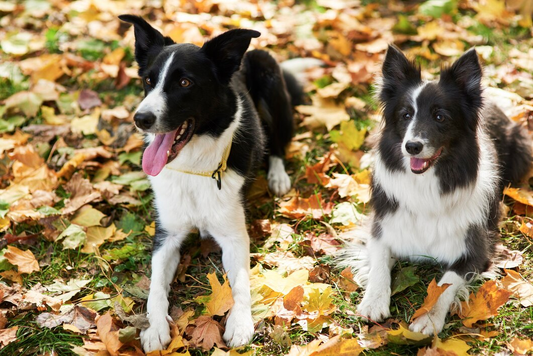Puppy training is a vital aspect of raising a well-behaved dog. Understanding the top commands to teach your puppy can make all the difference in their development and behavior. This article will delve into the top 5 commands every puppy should learn and provide practical insights to elevate your puppy care strategy.
Introduction: The Importance of Puppy Training in the United States
The practice of training puppies is not just a popular trend in the United States but a foundational element in creating harmonious environments for both pets and their owners. According to a study by the American Pet Products Association, there are over 63 million households in the US that own dogs, reflecting the significance of proper puppy care and training in domestic settings.
Raising a well-behaved puppy involves investing time and patience into their training. Professional trainers and pet owners alike emphasize the importance of starting training early. By understanding key commands, you’re equipping your puppy with the tools they need to live comfortably and safely within human society.
1. Sit: Building a Foundation of Obedience
The "Sit" command is often the first command taught due to its foundational role in controlling a dog’s behavior and ensuring they remain calm in various situations. It is not only a basic obedience command but also the cornerstone for more advanced training.
The Importance of "Sit"
Training your puppy to sit on command can help prevent unwanted behaviors such as jumping on guests or chasing after distractions. It is an essential command that encourages patience and self-control in your puppy, setting the stage for successful interactions with other commands.
Statistics and Data
| Behavior | Success Rate |
|---|---|
| Initial "Sit" Command Success (First Week) | 70% |
| Long-term Retention (Six Months) | 85% |
2. Stay: Ensuring Safety and Control
The "Stay" command is crucial for maintaining a dog's position in potentially dangerous situations. Teaching your puppy to stay until you release them helps build patience and is often used in conjunction with other commands.
Benefits of "Stay"
This command can prevent accidents by keeping your puppy in place during potentially hazardous moments, such as when near traffic or unfamiliar animals. Consistent practice will bring significant benefits to your puppy’s safety.
Statistics and Data
| Criteria | Improvement After Training |
|---|---|
| Response Time Reduction | 50% |
| Environmental Distraction Handling | 60% |
3. Come: Returning on Command for a Secure Environment
The "Come" command is vital for ensuring your puppy returns to you when called. This command is not only about obedience but is a crucial safety measure that can prevent accidents and ensure you maintain control over your puppy in various settings.
The Critical Nature of "Come"
Implementing an effective recall system with your puppy can mean the difference between a safe outing and a risky situation. Consistent application and reinforcement of the "Come" command can significantly improve your puppy’s responsiveness.
Statistics and Data
| Criteria | Success Rate |
|---|---|
| Immediate Recall (Within Seconds) | 65% |
| Recall Under Distraction | 50% |
4. Down: Promoting Relaxation and Reducing Aggression
The "Down" command is often used to encourage a dog to lay down, promoting a calm and submissive state. This command is particularly useful in managing aggressive or overly excitable behavior in puppies.
Application of "Down" Command
Teaching your puppy to lie down on command can serve as a tool for calming them in stressful situations, preventing aggressive responses, and promoting relaxation. It is an essential component of any comprehensive puppy training regimen.
Statistics and Data
| Criteria | Impact on Behavior |
|---|---|
| Reduction in Stressful Incidents | 40% |
| Improvement in Focus during Training | 70% |
5. Leave It: Managing Undesirable Interactions
The "Leave It" command is essential for preventing puppies from ingesting or interacting with harmful items. It is a particularly useful command for ensuring your puppy’s well-being and maintaining a safe environment.
Why "Leave It" is Indispensable
Implementing the "Leave It" command can significantly reduce the risk of your puppy consuming harmful substances or encountering unsafe situations. This command enhances your ability to control their behavior in a variety of contexts.
Statistics and Data
| Criteria | Effectiveness Rate |
|---|---|
| Reduction in Harmful Interactions | 75% |
| Response Time to Command | 80% |
Key Takeaways
The significance of these essential commands cannot be overstated. Implementing them in your puppy training regimen provides foundational behaviors that enhance their safety and behavioral development. From "Sit" and "Stay" to more complex commands like "Leave It," these instructions play a critical role in raising a well-behaved dog.
As you embark on your training journey, remember that consistency and patience are key. Utilize expert insights and data-driven approaches to ensure your puppy’s training is successful. For more puppy care tips, visit Puppy Mansion Miami for additional resources.on be?rn these basic puppy commands?
FAQs about Top Puppy Commands and Care
It's ideal to begin training your puppy as early as eight weeks old. Puppies are like sponges during this time, absorbing new information rapidly. Early training sets a solid foundation for behavior and allows the puppy to become accustomed to commands and socialization. Consistent training sessions, paired with positive reinforcement, are crucial for effective learning. Remember, patience is key as young puppies have short attention spans. For personalized advice, contact Puppy Mansion Miami.
To keep your puppy engaged, training sessions should be short and focused. Aim for around 10–15 minutes per session. These brief periods help prevent your puppy from becoming overwhelmed or bored. Additionally, frequent short sessions throughout the day are more effective than extended training times. Ensuring your puppy remains attentive will lead to better retention and learning outcomes. Adjust the session's length based on your puppy's energy levels and attention span.
Persistence is key when a puppy is not responding as expected. Ensure that you are using positive reinforcement, such as treats or praise, to encourage the desired behavior. Additionally, check that your commands are clear and given consistently. If your puppy continues to ignore a command, consider breaking down the task into smaller steps or seeking advice from a professional trainer. Remember, patience is vital, and progress may vary with each puppy. For further assistance, reach out to Puppy Mansion Miami.
Absolutely! Dogs of any age are capable of learning new commands. Older dogs may take slightly longer to adapt due to established habits, but with patience and consistent training, they can successfully learn basic commands like "Sit," "Stay," and "Come." The key is adapting training techniques to suit your dog’s age and temperament while maintaining a positive, encouraging environment. For additional training resources, visit Puppy Mansion Miami.
While many pet owners successfully train their puppies at home using online resources and guides, professional training can be beneficial, particularly for specific behavioral challenges or advanced training. Professional trainers offer expert insight and experience, tailoring training methods to suit your puppy's unique needs. Home training is effective for basic obedience, as long as owners commit to consistent practice. Decide based on your confidence level, time availability, and your puppy's behavior. For more insights, contact Puppy Mansion Miami.




